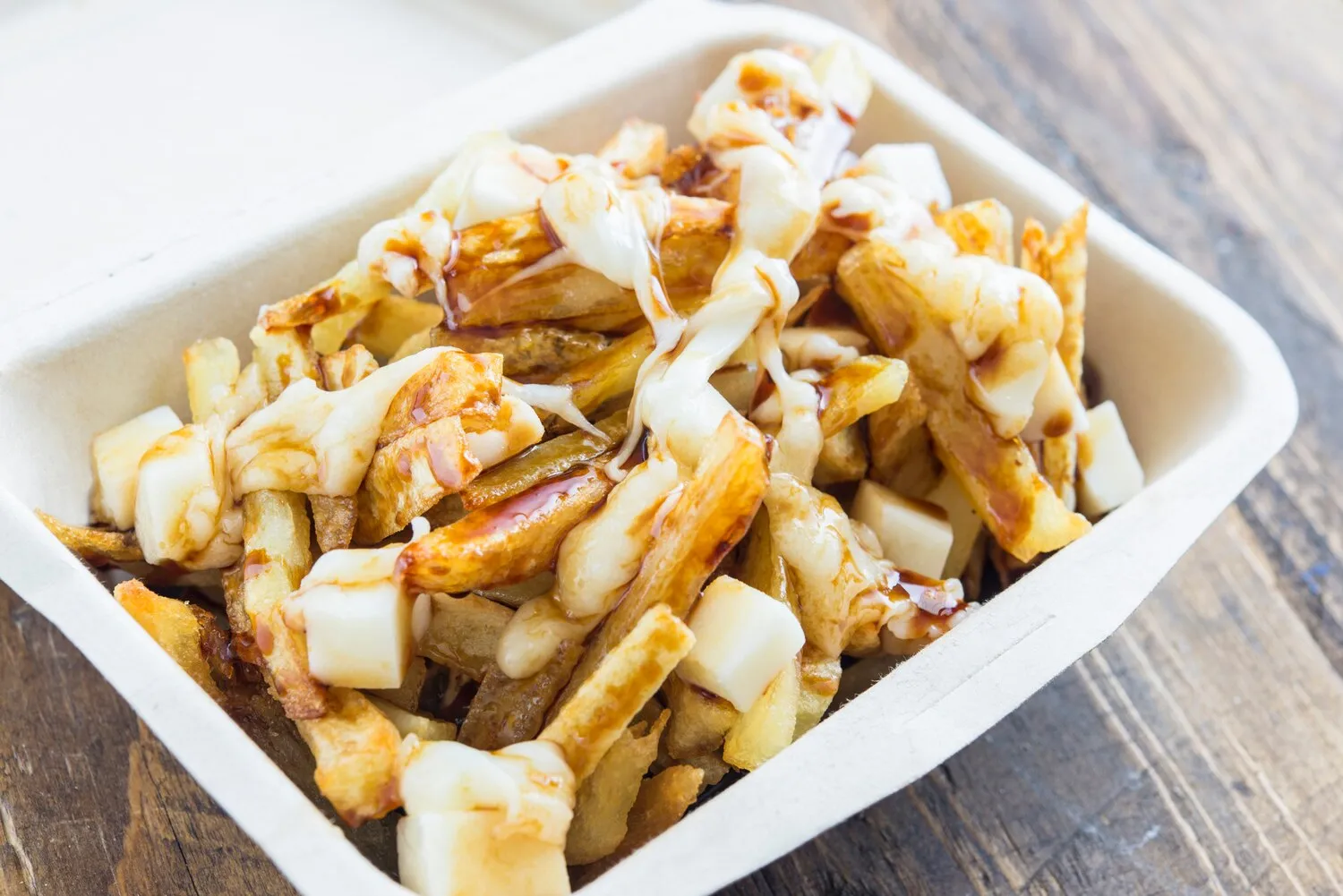
Poutine Classique
Fries, cheese curds, and gravy.
Nutrition Facts
* The % Daily Value (DV) tells you how much a nutrient in a serving of food contributes to a daily diet. 2,000 calories a day is used for general nutrition advice.
Poutine's origins are debated, but it emerged in rural Quebec in the 1950s. Several towns claim to be the birthplace, with Le Roy Jucep in Drummondville being a prominent contender. The exact combination of fries, cheese curds, and gravy seemingly arose from a customer's request to combine these ingredients.
Poutine has evolved from a simple, regional snack to a national dish and a symbol of Canadian identity, particularly in Quebec. It's often associated with comfort food, local pride, and a sense of community.
Quebecois Identity
Poutine is strongly linked to Quebecois culture and pride. It represents a unique culinary creation from the region and is often seen as a symbol of its distinct identity within Canada.
Comfort Food Staple
Poutine is widely considered a comfort food, often enjoyed during casual gatherings, sporting events, and as a late-night snack. Its warm, hearty nature makes it particularly popular in colder climates.
National Dish
While its roots are in Quebec, Poutine has become a national dish of Canada, enjoyed across the country in various forms. It is often featured in Canadian-themed events and promotions.
Poutine offers a delightful combination of savory, salty, and rich flavors with textural contrasts.
The crispy, salty french fries provide a starchy base. The fresh cheese curds offer a squeaky, slightly tangy flavor and a unique chewy texture. The warm gravy binds the ingredients together with a savory, often meaty, and slightly peppery flavor, adding richness and moisture. Ideally, the gravy is not too salty and complements, rather than overwhelms, the cheese and fries.
Fresh Cheese Curds are Key
The cheese curds MUST be fresh, ideally no more than 24 hours old. Fresh curds have a unique 'squeak' when bitten due to their trapped moisture. Older curds become rubbery and lose their squeak, impacting the overall experience.
Perfect Fries Matter
Use a starchy potato like Russet and cut them into thick-cut fries. Double-frying is recommended: once at a lower temperature to cook the inside, and then at a higher temperature to crisp the outside. Season immediately after frying.
Gravy Consistency and Flavor
The gravy should be rich, flavorful, and have a medium-thick consistency - thick enough to coat the fries and cheese, but not so thick that it becomes gloppy. Chicken, beef, or vegetarian gravies can be used, but a slightly peppery brown gravy is most traditional.
Serving Temperature
Serve immediately after assembling. The hot gravy helps to slightly melt the cheese curds, creating the desired gooey texture. If left too long, the fries can become soggy, and the cheese loses its squeak.
Explore additional Poutine dishes and restaurants
Explore PoutineDiscover top dining spots and culinary experiences in Québec.
Explore QuébecLearn more about the food culture, restaurant scene, and culinary heritage of Canada.
Explore Canada